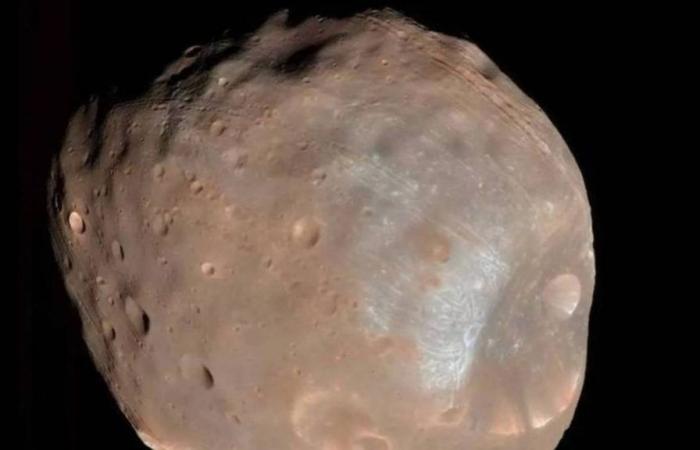A strange shape in it space was captured on video by the United States National Aeronautics and Space Administration (POTfor its acronym in English) and shared on its social networks, while warning that its trajectory is directed directly at one of the planets in our Solar System, which could be destroyed.
The object has a peculiar characteristic, since although it is one of the two moons of Marsits figure is not round like the rest of the planets or the same natural satellite or the Sun, since it has an amorphous semicircular figure that resembles a dadalso because of its brown color.
Keep reading:
They exhibit unpublished images of the universe, what was discovered and how does it affect humanity?
NASA reveals that strange magnetic anomaly does not stop growing and will impact humanity
What is the strange shape recorded by NASA?
According to the US space agency, Tuesday’s moon is identified as Phobos which has dimensions of 27 by 22 by 18 kilometers in length, which makes it an object not so small, but not so large for gravity to act on it.
In that sense, Phobos’ almost circular shape is due to the fact that “its gravity is not strong enough to pull it into a sphere (like Earth’s Moon), giving it its lumpy shape,” NASA explained in its account. Instagram where he shared the image of the structure.
What planet would be destroyed by Phobos?
NASA reported that Phobos is also on a collision course with Mars, although it will take a while to get there, he said. “It approaches the red planet at a speed of 1.8 meters every hundred years. At that rate, the moon will crash in Mars in 50 million years or it will be separated,” said the agency, adding:
“This image was taken by the High Resolution Science Experiment (HiRISE) camera on our Mars Reconnaissance Orbiter, which has been studying Mars since 2006. The Martian moon Phobos rises against the darkness of space. The moon is red-brown and lumpy, pocketed with a series of craters of all sizes. A white patch is visible next to the Stickney crater, a particularly large crater on its right side,” he detailed.






